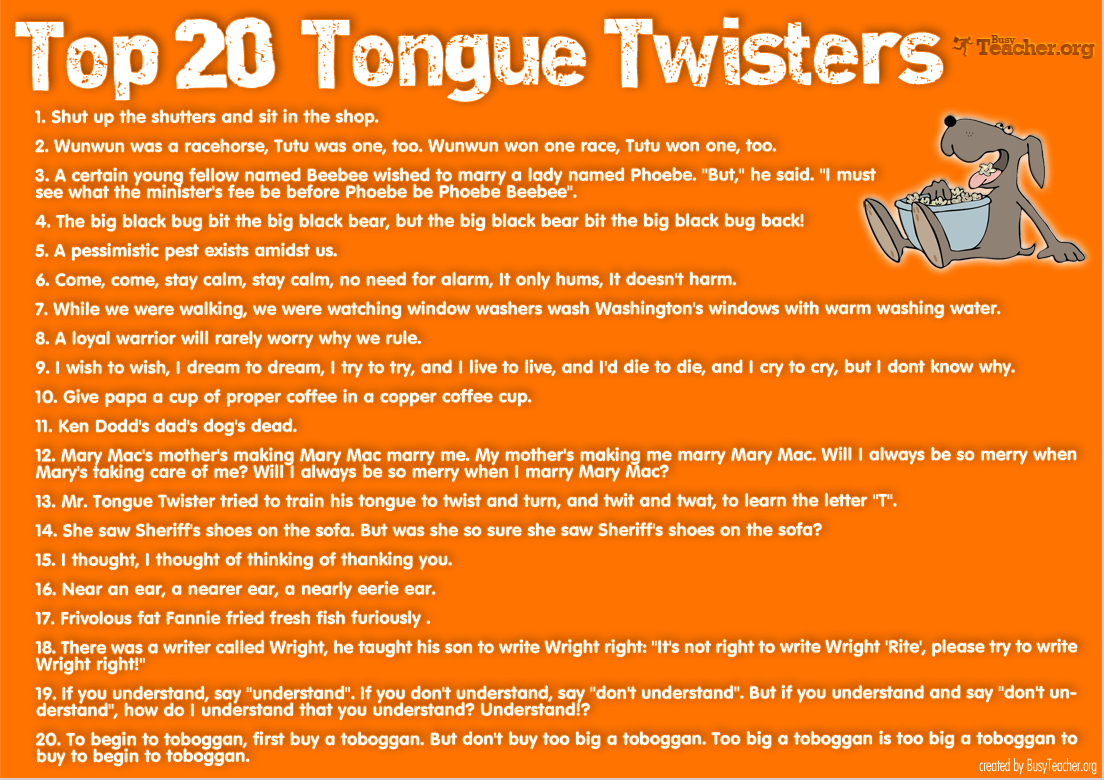Pronunciation can be one of the most fun but sometimes challenging to teach online. When I think of teaching pronunciation I imagine some teachers who get their faces right up to the camera to show how they form their lips and tongue to encourage the correct pronunciation. Let’s be honest, we can look a little ridiculous and maybe even desperate sometimes. To avoid this frustration let’s chat a bit about how we can teach pronunciation in online lessons.
The first thing to remember is that every student is unique. No two students are exactly the same. Some are maybe more exposed to British pronunciation than American and vice versa.
Let’s start with Phonics, Vowels Consonants.
Phonics is the basis of the English component and without a good grasp, it can make it more difficult for the student to understand. It is not only useful for beginner students or children. Sometimes reintroducing phonics can be helpful in pronouncing some more complicated words. You may also include vowel sounds: a, e, i, o, u.
When teaching vowels along with phonics, make sure your student understands the symbols and the shape and sound their mouth makes when they sound out the letters. You can print big letters and show them up to the camera.
Since teaching online can be tricky, the way I help my students grasp the concept is by use of my hands. While I sound the letter I also display the sound with my hands. This way I can elicit the sound from my student to check for understanding by means of TPR.

“Alphabet Tales” makes a connection between stories and hand motions for children to easily understand. For A, we make an anthill with our fingers and then touch thumbs to make the tunnel Abner made as he tunneled through the anthill For E, the kids will make a fist and find the lowercase E their fingers made. For I, use an upraised hand similar to the feathers on Ike’s head. The O is Oscar’s wide open mouth, and the U is Uncle Ule’s upside-down umbrella. Stories from Child1st.com are great for beginners and for visual, right-brained, and kinesthetic learners.”
The next step which should encourage active memory is introducing a mirror.
It’s important that your students’ practice at home where they feel comfortable and more confident. The magic tip is using a mirror. The mirror will enable the student to recall which sounds are formed by which shape or part of the mouth. When students become aware of their own physical movements they tend to correct themselves more effectively. Keep in mind the use of the mirror is more appropriate for hometask.
Sure, you can show the students how you shape your own mouth but that doing so while teaching online not to be as effective.
As I am explaining this I keep thinking of what my childhood teacher taught us for the “O” sound. She used to say: “pretend you have a very big hot potato in your mouth” to encourage the correct pronunciation of the “O” vowel. You can find tips on how to explain making sound in “Tree or Three?: An Elementary Pronunciation Course” and “Sound Foundations: Learning and Teaching Pronunciation”
Phonemes.
Once your student has phonics down and a relatively good grip on it, you can start introducing phonemes.
What are phonemes? They basically are individual sounds put together to make up words. They have vowel and consonant sounds.
- Pit, pat, put, pet and pot
- Pat, bat, cat, hat, rat and sat
- Sat, sad, sap, sack and sass
Making your students aware of phonemes is critical since this enables them to read and spell with success. When students are not able to distinguish these different sounds it makes it nearly impossible to understand listening, reading, writing or spelling.
When teaching phonemes always demonstrate the words and sounds and ask your students to repeat and mirror you. Once students have the hang of it, please remember to check if they truly can remember the sounds or words by means of writing the letter and asking the student to sound it out. You can also ask the student to match the words that have the same sound.
Here is my favorite site for practicing phonemes:
https://www.education.com/resources/phonological-awareness/
Next, you can introduce rhyming and tongue twisters.
This is the fun part!
Tongue twisters are more appropriate for consonants but you’ll definitely get some vowel action too. This is a great way to train the shape of the mouth in pronunciation of certain words. This also enables quick thinking and processing of information.
I like to have competitions with my students using tongue twisters. We practice it together until the student is able to accurately pronounce each word confidently. Next, we try to see who can say the tongue twister the fastest. You can kick it up a notch by reading the tongue twister from back to front, usually, it makes for a good laugh and an extremely engaging lesson.
Below you can find 20 fantastic tongue twisters from busyteacher.org

Rhythm and stress.
We are already aware that different languages follow their own rhythm and stress when they speak. This is a tricky part to teach since it’s easy to fall into their own native habits. In some languages, each word is stressed in a sentence but in English only certain words are. We will look at it in more detail next.
Note: Be patient with this part of pronunciation teaching.
- Content Words
- Function words.
Content words are the words we need to grasp in order to understand a message or sentence whether it’s written or spoken.
Function words are connected to grammar and used to perfect it. However, when we remove the function words, the receiver should pretty much still be able to grasp the message since the message contains content words.
To break it down further, as children we use only content words. Example: “Mamma, hungry”. The child hasn’t said a sentence but the receiver immediately understand the message just by understanding the content words and the stress of “hungry”.
But the further the language develops, we start to use function words. Think nouns, verbs, prepositions, pronouns and with this development of functional words the person learns where to stress the correct words to get their message across. Example: “Mama, please PASS me the juice.”.
When we teach rhythm and stress online I like to encourage natural rhythms my incorporating clapping. If the sound is distracting, I use a pen much like how a conductor would when conducting a orchestra or a choir.
Here is a great resource for stress:
https://www.yourdictionary.com/index.php/pdf/articles/38.pronunciation-printable-1ydlogo-reducedwhitespace.pdf
Drilling, drilling and more drilling.
Drilling can be fun especially in groups. Drilling is important because it helps train the tongue. It’s as useful as rhyming if you think about it. When we drill the student is provided with constant intensive listening of the pronunciation, they will be able to get around more difficult sounds and imitate intonation.
I like to use sound and writing when drilling. When the student writes the words we sound out each letter. We also underline all the vowels. Once the student has written the word we sound the word. We repeat the process and then I check for understanding. I write the word and the student must sound it and then sound out each letter.
As we mentioned, pronunciation can be tricky and it’s truly up to you to find what technique works with what student. Do the research and immerse yourself with it. If you expose yourself to many new techniques, the better your chances are of teaching pronunciation without the hassle.
For more tips and tricks, check out this article.






 Вероника Аветисян
Вероника Аветисян 
 Маргарита Аветисян
Маргарита Аветисян 


